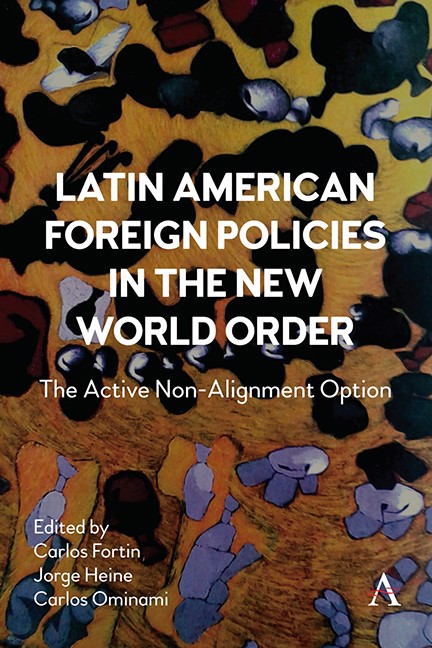Book contents
- Frontmatter
- Dedication
- Contents
- List of Tables and Figures
- Foreword
- Introduction: Active Non-Alignment (ANA) A Doctrine
- Part One The Emerging World Order
- Part Two Active Non-Alignment In The New Geopolitical Environment
- Part Three Active Non-Alignment in the New International Political Economy
- Part Four National Perspectives
- Conclusions—Implications of an Active Non-Alignment (ANA)
- Notes on Contributors
- Index
Chapter Nineteen - Brazil and The Global South
Published online by Cambridge University Press: 15 November 2023
- Frontmatter
- Dedication
- Contents
- List of Tables and Figures
- Foreword
- Introduction: Active Non-Alignment (ANA) A Doctrine
- Part One The Emerging World Order
- Part Two Active Non-Alignment In The New Geopolitical Environment
- Part Three Active Non-Alignment in the New International Political Economy
- Part Four National Perspectives
- Conclusions—Implications of an Active Non-Alignment (ANA)
- Notes on Contributors
- Index
Summary
At the beginning of the government of President Luiz Inácio Lula da Silva, in 2003, a young television journalist asked me: “Minister, why do you pay so much attention to South America?” The question reflected both the diplomatic effort developed in the region and a worldview that prioritized the large, developed countries. My answer was simple: “Because I live here.” The same goes for our priority for the countries of the south.
Except for Latin America, the Global South only appeared on the radar of Brazilian diplomacy in the early 1960s, fueled by the independence of African nations. Before that, the rise of the Non-Aligned Movement (NAM) was something that Brazil followed at a distance with little or no participation. Our interests and relationships were centered in the Western, European, and North American developed world. Even in our region, our vision went little beyond the countries with which we border. Chile and Mexico attracted the attention of some academics but were not the focus of major diplomatic initiatives. Starting in the 1950s, in part due to studies carried out by the United Nations Economic Commission for Latin America and the Caribbean (ECLAC), a specific Latin American outlook began to take shape, which was expressed in the initiative of President Juscelino Kubitchek’s Pan-American Operation in 1958.
Some embassies were opened in Africa, something that would continue in the governments of Janio Quadros and João Goulart. Writings about an “independent foreign policy,” as conceptualized by Santiago Dantas, would project our external view to what today would be called the Global South. The movement for the liberation of the Portuguese colonies, beginning in 1961, would attract intellectuals, politicians, and international officials. The 1964 military coup would curb that Third World momentum—but not entirely.
If we think about Brazil’s foreign policy in the last half-century, which includes almost half the period of the military dictatorship (1964–1985) the Global South, with or without that name, has always occupied a prominent place.
- Type
- Chapter
- Information
- Latin American Foreign Policies in the New World OrderThe Active Non-Alignment Option, pp. 251 - 262Publisher: Anthem PressPrint publication year: 2023

